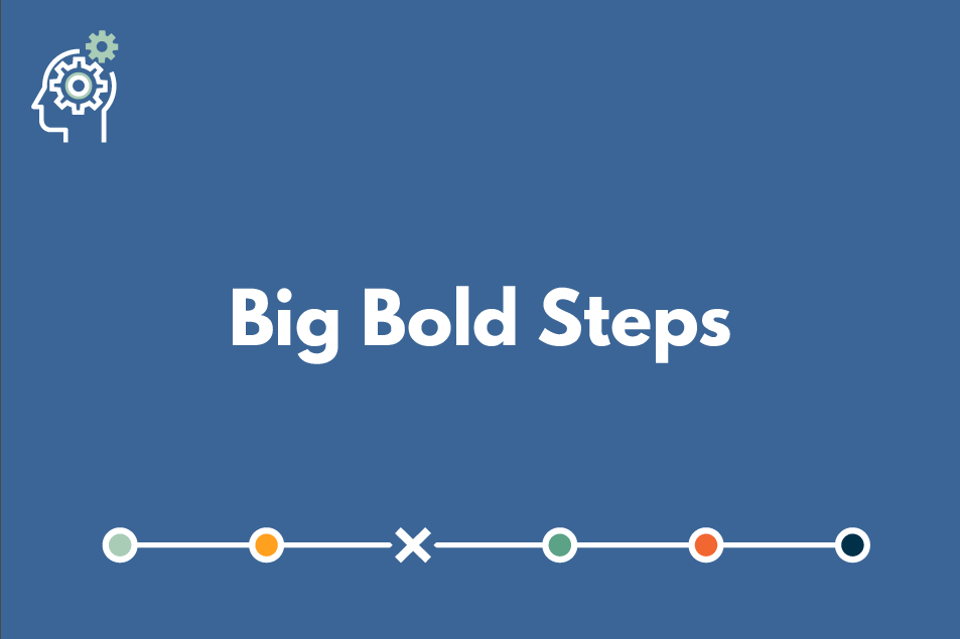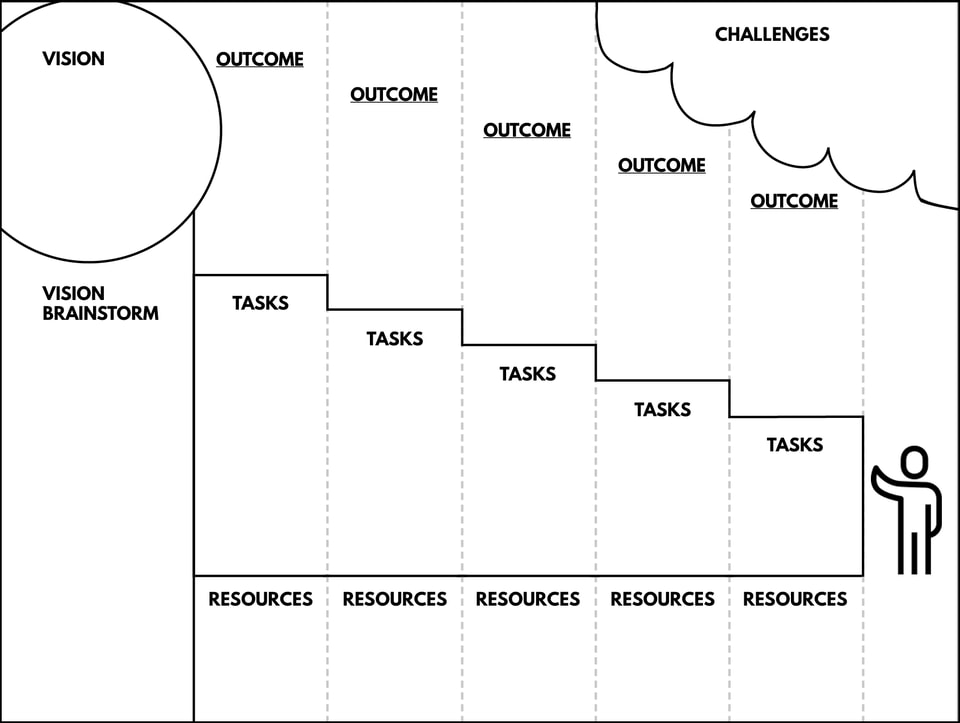Thinking Tool Published May 24, 2018 · 3 minute read
Big Bold Steps
Nancy Hale, Luke Watson, & Jenn Roche

Big Bold Steps is a visual guide that will help organize and orient you through a big strategy you are working on and break it up into manageable outcomes and tasks, and identify resources you have or need.
We start with a vision of what the future may look like if we’re successful. “My boss will be known as the go-to Member on national security.” “Our organization will be the leader in the gun control debate.” “Our legislative team will turn around constituent mail in two days.” Whatever it is, your vision should be big enough to both inspire and challenge you and your team.
Vision must be grounded in strategies, tasks, process, initiatives, and tactics—beginning big and working toward the granular.
What you’ll need:
- A pen or pencil
- Our graphic or a blank piece of paper if you want to draw it yourself
The process:
Starting with Vision, ask yourself “what is the purpose of this project? Why are we doing this?” Answering that question will give you purpose and direction. Use the area around the Vision section to brainstorm about your vision. What does the future look like? What will it feel like? What is at stake? This should take some time—you want to get this right because everything beyond this step will support you on your way toward your vision.
By coming up with a big vision, maybe your brain instinctively thinks of all the challenges you might face along the way. Write them in the space provided. Knowing before you begin what obstacles lie ahead will give you opportunity to address them early in the process and, potentially, mitigate their impact.
Move to Outcomes. Outcomes serve the vision and are the big steps to get you there and will indicate you are on your way. What needs to happen? What decisions need to be made? What strategies need to be put in place? Ask yourself if your goals are measurable. Are they big enough to challenge but not so big that they are impossible? Meeting these outcomes should give you a sense of accomplishment and an idea of how far you have yet to go. Keep the Challenges in mind as you determine outcomes. Maybe one of your outcomes will address a specific challenge head-on. Choose as many outcomes that you think you need to complete your vision – no fewer than two and no more than five.
Tasks are the nitty gritty—the steps and processes and details that must be managed and undertaken in order to reach each outcome. Think people, places, and things. These don’t have to be in chronological order. They should be clear enough that you will understand what they mean two weeks from now.
Resources are things you have or need to get in order to accomplish your tasks.
It’s at this point that you may need to revise your outcomes. Are they big enough? Do they serve or support your vision?
Now it’s time to begin developing your step-by-step plan; you can begin delegating and assigning work and deadlines.



